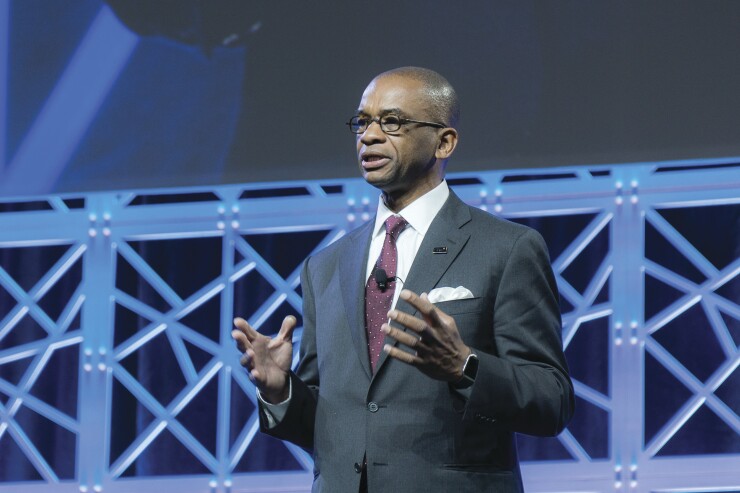While FPA offers a robust set of services and programs nationally and through our network of 88 chapters and state councils, we need to face the truth that the landscape for national voluntary professional membership associations has changed dramatically. Simply doing business the way we have been will not get us where we need to be as an organization. Is FPA in financial trouble? No. Is FPA falling apart? No. But here’s the reality about voluntary professional membership associations like FPA.
Competition from the nonprofit and for-profit sectors in areas that were reserved for associations like FPA in the past has increased exponentially. Professionals joining related associations because of loyalty or professional obligation, which was the norm in the past, is the exception now. The homogeneity of membership that existed in professional membership organizations in the past made the development of attractive programs and services simpler. Demographic and business diversity has multiplied the complexity and number of target markets that professional associations must consider. This is all occurring against the backdrop of our technology-driven economy.
All voluntary professional membership associations are dealing with these issues. It is easier for smaller associations with a narrower scope or purpose to deal with the challenges. For national, broad-based associations like FPA, the challenges are more acute. This is the reality of the landscape today that any knowledgeable, experienced association expert would work to address. The challenges manifest particularly in attracting the next generation of professionals. FPA is no different. FPA has a strong membership retention record compared to other professional associations; however, the average age of an FPA member is approximately 53 years old. For those who say, “FPA is fine and doesn’t need to change,” I say, “FPA is fine and needs to institutionalize how it leverages its passionate leaders and programs to be even better in the future.” It is for those reasons that we have been working to realize a better future for the association through the OneFPA Network draft plan.

This multi-year examination began with concerns raised by chapter leaders several years ago. Is the vision presented by the OneFPA Network draft plan the only option to address today’s challenges?
Since we formally introduced the OneFPA Network draft plan in November 2018, we have learned a lot about what matters most to our stakeholders, thanks to the comments and insights from FPA members and leaders.
After 16 weeks of persistent outreach to all of our chapters, we can report that we held listening tour meetings with nearly 90% of our chapters and several other communities in the association, including our next-gen community, past presidents, and chapter executives, among others. The feedback we’ve heard will be vital to shaping our shared future and will be used to ensure that FPA is more relevant than ever before.
The OneFPA Network draft plan is a complete reorganization of the entire FPA enterprise that allows all key functional areas to work more closely together while simultaneously institutionalizing a process to include more chapter leader input into the strategic direction-setting of FPA. Given the landscape issues we face, we believe this a worthwhile and necessary endeavor.
-
Aiming to build a unified experience for its members nationwide, the move follows fiduciary fallout and dissolution of its New York chapter.
November 9 -
The planning association says it needs to undertake “transformational change,” but its latest proposal may just multiply its problems.
January 28
We’ve received many questions, but one topic that came up consistently was whether chapters, in any way, would be stripped of their autonomy. I want to state unequivocally that chapters are not going away and under no circumstance will their autonomy be restricted. Restricting chapter autonomy would dampen the enthusiasm and engagement of our local volunteer leaders. This cannot happen since chapters are too important in providing members with critical value. The goal is to better support FPA and chapters, including our most successful ones, so the entire system performs better on behalf of our members and the profession.
Of course, elevating the integration and alignment of FPA nationally and locally is only one reorganization option. Another option would have been to pursue greater separation between FPA national, chapters and other communities. However, what emerged from our analysis is that creating an enhanced level of organizational cooperation and collaboration to attain a more seamless and meaningful member experience is the right course of action. Honestly, no one knows for certain the best route for FPA to take, but to try no alternative options would not be wise leadership. Determining whether the OneFPA Network vision ― or any of the component parts of the vision ― will create a more effective FPA is unknown. That’s why, whatever is embraced as the next step in the OneFPA Network draft plan will require clear goal setting, precise measures and a willingness to learn from the information. We’ll need to incorporate what’s working and modify or discard what is not.
Rest assured that we’re not done listening and learning. In fact, we expect to announce the second iteration of the plan by mid-April, which will include a 45-day comment period for stakeholders to provide additional feedback.
While I deeply respect the financial planning profession and the noble professionals that join FPA to better themselves and make a difference, I am not a financial planner. I am an association professional who recognizes the trends in today’s associations and will continue to implore FPA leaders to courageously bring FPA into a new and better organizational future.





